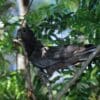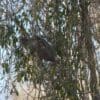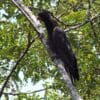Black Parrot
Also known as:
Lesser Vasa Parrot, Bang's Black Parrot (C.n. libs)
Also known as:
Lesser Vasa Parrot, Bang's Black Parrot (C.n. libs)

Coracopsis

nigra
Size:
35 cm (13.6 in)
Weight:
315 g (11 oz)
Subspecies including nominate:
two: C.n. nigra, C.n. libs
Colour Adult:
C.n. nigra: Both adults black/brown; undertail covers marked grey; outer webs of primary feathers grey; tail brown/black, banded darker towards tip. Beak pink/white, becoming grey after moult. Bare eye ring grey; eye dark brown.
C.n. libs: Both adults paler in colour; underparts more brown; upperparts tinged with blue/grey; no dark band on tail.
Colour Juvenile:
Immatures paler than adults with yellowish tinge on beak and pale grey tail feather tips.
Call:
Varied sounds, more pleasant sounding than the Vasa Parrot. Flute-like whistles. Some calls shrieking or discordant. Also melodic whistle quite different the Vasa Parrot.
More Information:
Content Sources:
CITES
BirdLife International
Cornell Lab of Ornithology/Birds of the World
Parrots: A Guide to Parrots of the World, Juniper and Parr, 1998
Article “Lesser and Greater Vasa Parrots,” Dave Blynn, Bird Talk magazine, 1992
Parrots of the World, Forshaw and Cooper, 1989. 2010 edition
Parrots of the World, Forshaw, 2006.
Parrots in Aviculture, Low, 1992.
Psittacine Aviculture, Schubot, Clubb and Clubb, 1992.
Captive Status:
Rarely seen.
Longevity:
—
Housing:
Walk-in aviary, minimum length 4.5 m (14.7 ft).
Diet:
Fruit such as: apple, pear, orange, banana, cactus fruits, pomegranate, forming about 30% of the diet; fresh vegetables such as: carrot, celery, green peas, beans, fresh corn, green leaves; spray millet and limited mixed seed, cooked beans and pulses, complete kibble.
Enrichment:
When housed in outdoor aviaries, Black Parrots love to bathe in the rain. They are also avid sunbathers, spreading their wings out.
Nest Box Size:
Vertical box 12″ x 12″ x 36″ (30.5 cm x 30.5 cm x 91.5 cm).
Clutch Size:
3 to 5
Fledging Age:
5-6 weeks
Hatch Weight:
—
Peak Weight:
—
Weaning Weight:
—
World Population:
Unknown but reported to be common, stable.
IUCN Red List Status:
Least Concern
CITES Listing:
Appendix II
Threat Summary:
Officially treated as pest species because of crop damage, also hunted for food and taken for pets. Ongoing forest loss appears to be the most significant threat.
Range:
C.n. nigra: E Madagascar.
C.n. libs: W Madagascar.
Habitat:
Found in variety of habitats including forest, savanna, wood surrounded villages, primary forest and cultivated areas from sea-level to 2050 m (6724 ft).
Wild Diet:
Takes mainly unripe fruits including Poupartia chapelieri, Polyalthia madaascariensis, Cabucala madagascariensis, Polyscias sp., Schefflera rainaliana, Dypsis prestoniana, Symphonia sp., Terminalia fatraea, Agelea pentagyna, Agave rigida, Hippocratea rubiginosa, Alluaudia procera, Croton sp., Uapaca sp., Acacia farnessiana, Tamarindus indica, Melia azedarach, Neotina isoneura and Celtis philippensis, as well as mango (Mangifera indica). Also flowers and shoots of Capuronia madagascariensis, Colvillea racemosa, Foetidia asymmetrica and Bivinia jalberti.
Ecology and Behaviour:
Diurnal foraging movements, but resident. Usually seen in small noisy flocks; active on moonlit nights.
Clutch and Egg Size:
3 to 5 eggs, oval shaped, 36 x 26 mm (1.4 x 1 in).
Breeding Season:
Likely November-February; nest is in tree hollow or occasionally a cavity once occupied by Vasa Parrots (Coracopsis vasa). Recorded using a cavity at the same time as a Lesser Hedgehog Tenrec (Echinops telfairi).
Related Links:
—
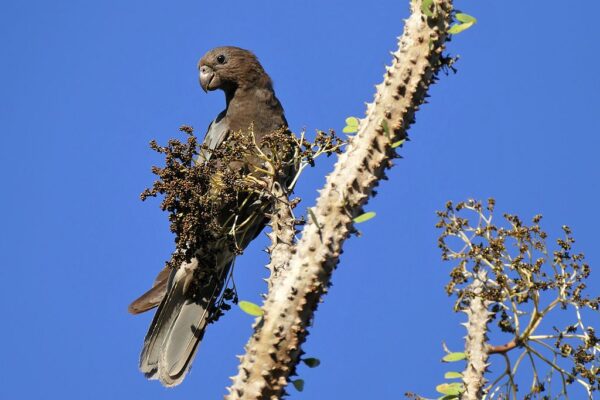
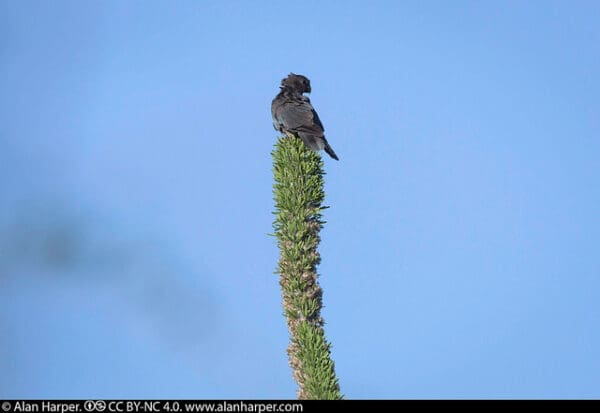
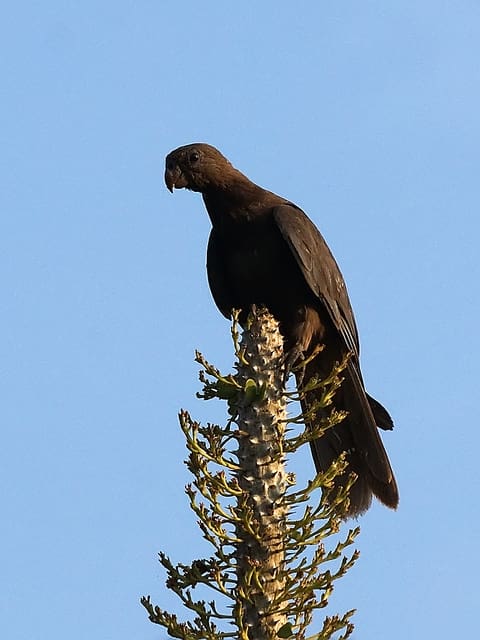
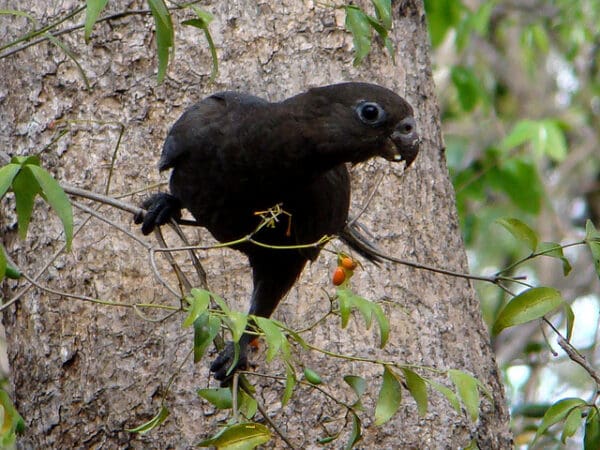
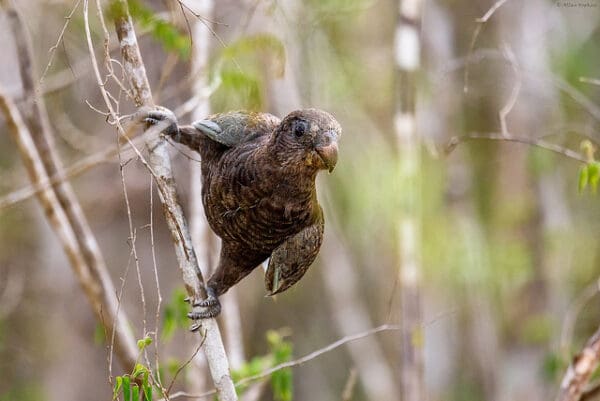
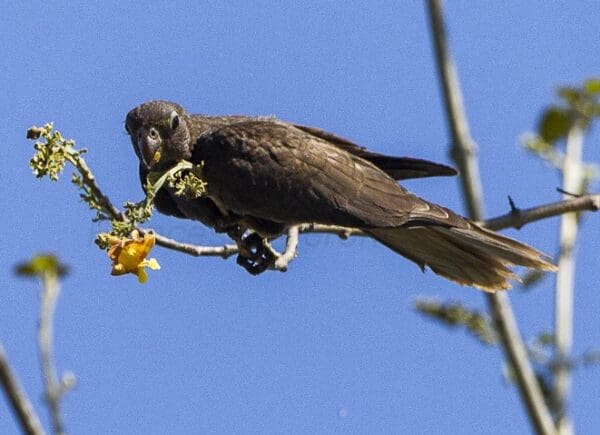
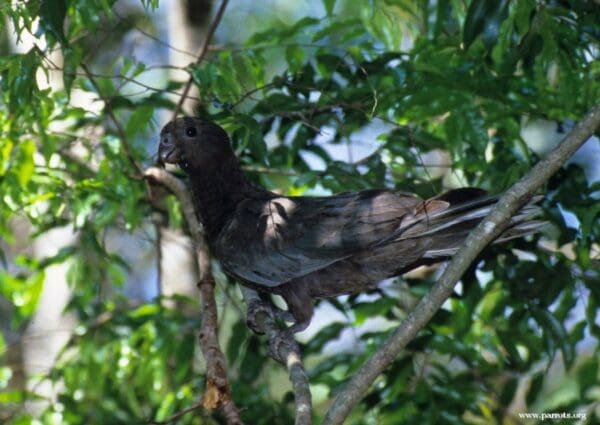
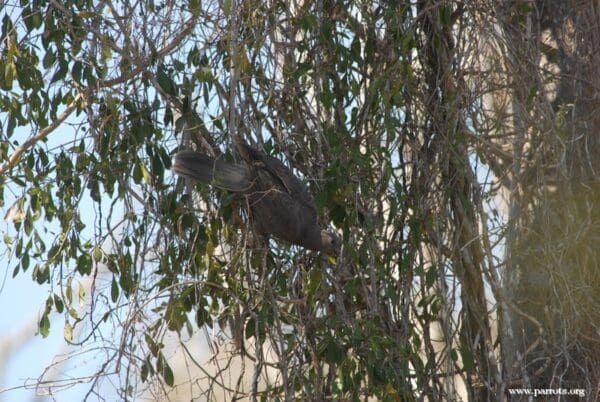
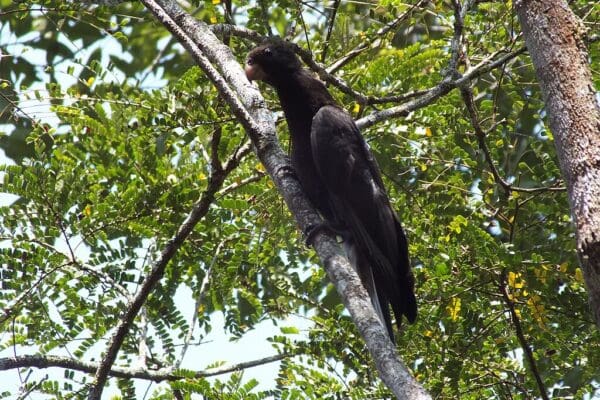
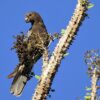
![© Alan Harper [CC BY-SA 2.0] via Flickr A wild Black Parrot perches atop a plant](https://gt2024.parrots.org/wp-content/uploads/2023/01/wpt_Black-Parrot_1115-8-100x100.jpg)
![© David Cook [CC BY-SA 2.0] via Flickr A wild Black Parrot perches atop a tree](https://gt2024.parrots.org/wp-content/uploads/2023/01/wpt_Black-Parrot_1115-7-100x100.jpg)
![© Werner Witte [CC BY-SA 2.0] via Flickr A wild Black Parrot feeds on berries](https://gt2024.parrots.org/wp-content/uploads/2023/01/wpt_Black-Parrot_1115-6-100x100.jpg)
![© Allan Hopkins [CC BY-SA 2.0] via Flickr A wild Black Parrot, ssp libs, clings to a branch](https://gt2024.parrots.org/wp-content/uploads/2023/01/wpt_Black-Parrot_1115-5-100x100.jpg)
![© Francesco Veronesi (Black Parrot - Ankarafantsika - Madagascar_S4E9458) [CC BY-SA 2.0] via Wikimedia Commons A wild Black Parrot feeds on fruits](https://gt2024.parrots.org/wp-content/uploads/2023/01/wpt_Black-Parrot_1115-3-100x100.jpg)
